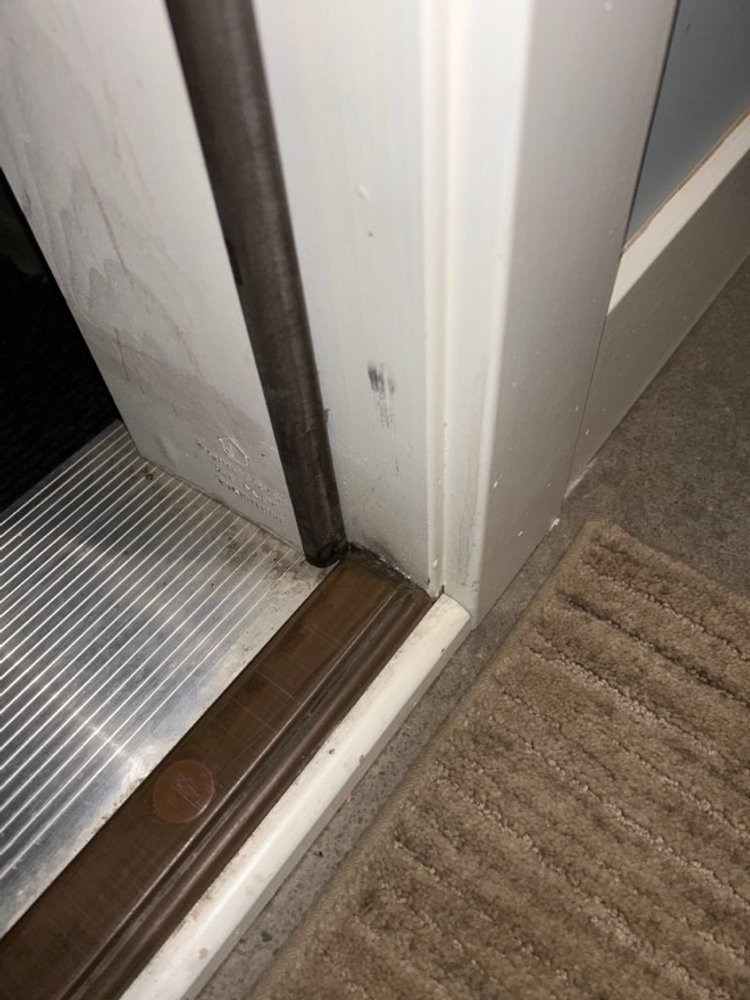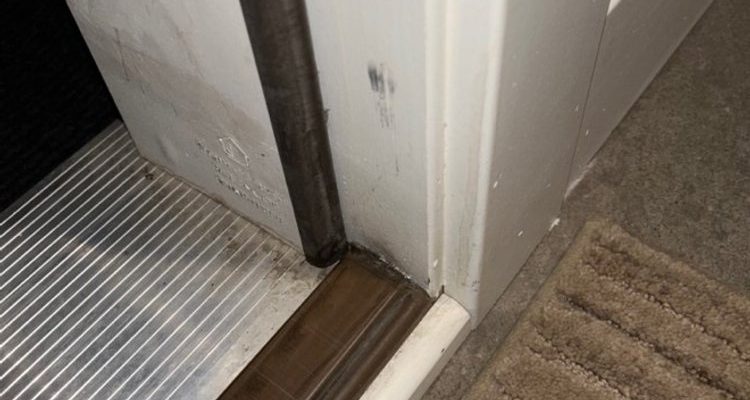
Think of weatherstripping like a winter jacket for your house. It’s there to keep out the chill, rain, and wind. But if your jacket’s too puffy, you can’t move your arms. Same deal with doors: the right amount of weatherstripping keeps drafts out, but too much—or installed the wrong way—and suddenly the door doesn’t want to move at all. I’ve wrestled with this at my own front door (a classic Therma-Tru), and trust me, it can make every trip outside feel like a feat of strength.
So, what’s actually going on beneath those stiff hinges? Let’s dig into why your weatherstripping might be making your exterior door stick, why it matters, and how you can fix it without breaking a sweat—or your door.
What Is Weatherstripping and What Does It Do For Exterior Doors?
Weatherstripping is, at its core, a seal. It’s usually a strip of foam, rubber, felt, or vinyl that lines the edges of your door frame. The goal is simple: block out air, water, insects, and noise from sneaking in around the cracks. Brands like Therma-Tru, Masonite, and Jeld-Wen all use slightly different materials and designs, but the aim is always the same—a tight seal.
Here’s the thing: exterior doors, especially in older homes, can be a bit quirky. Maybe you’ve got a beautiful old wooden door that’s seen decades of seasons. Or maybe it’s a modern insulated steel door that likes everything just so. Either way, weatherstripping upgrades can dramatically improve comfort and energy efficiency—if it fits just right.
If the weatherstripping is too bulky, misaligned, or even the wrong *type* for your door, you may find yourself having to push, pull, or slam the door to get it closed. Not only is this super annoying, but it can also put stress on the door, the frame, and even the hardware—think hinges, latch, and lock. That stickiness isn’t just a minor hassle; it’s a small sign that something’s off with the way the door and the weatherstripping are syncing up.
How Weatherstripping Causes Doors To Stick
Honestly, it comes down to a mix of friction and pressure. When new weatherstripping is installed—especially the thick, foam kind—it can add extra *bulk* around the door’s edge. Imagine trying to close a suitcase that’s overpacked; you have to force it just to get the zipper around. Your exterior door is the same. If the sealing material is thicker than the original, or if it’s not squished down properly, it ends up pressing hard against the frame when you try to close the door.
Your door might start to catch at certain spots, feel tough to latch, or even bounce back open. Sometimes, people think the door has “settled” or warped, when in reality, it’s just the new weatherstripping making things too tight. You might be wondering if all weatherstripping is created equal—spoiler: it’s not. Some brands use softer, springier materials; others are dense and rigid, which can make this problem worse.
There’s also the issue of uneven installation. If the seal isn’t paired up evenly around the edge, one corner might have tons of friction while the other barely touches. A misaligned strip, a gap, or an overlap is like trying to walk with one shoe tighter than the other—it just doesn’t work smoothly.
Common Types of Weatherstripping That Can Cause Sticking
Each weatherstripping material has its own personality, and some are more likely to cause sticking than others. Let me explain the main types you’ll find on exterior doors:
- Foam tape: This self-adhesive strip is easy to install but tends to be bulky. If you don’t compress it enough, doors can stick or fail to latch.
- Rubber or vinyl bulb strips: These are often seen on newer or high-end doors (like Therma-Tru or Masonite). They fit into a slot in the frame and create a soft, even seal—but if the bulb is too fat, it can make closing the door tough.
- Spring-metal (V-strip): Thin metal strips that flex to close gaps. They’re less likely to cause sticking, but if installed out of alignment, the edge can catch on the door.
- Felt strips: Old-school and not very durable. While less likely to cause sticking from bulk, they can make a door feel scratchy or uneven if they shift.
In my own experience, swapping out an old, flat felt strip for a thick foam tape seemed like a smart energy move… until the door felt like it was glued shut! Matching the *type* of weatherstripping to your door’s design really matters. Some doors are designed for thin, flexible strips; jamming a fat foam roll into a narrow frame is just asking for trouble.
Signs Your Door Is Sticking Because of Weatherstripping
Before blaming your door or thinking you need a new lock, check for these telltale signs that the weatherstripping is at fault:
- The door is hard to close: You need to lean or shove just to get it to latch.
- The latch won’t catch smoothly: If the door bounces back or you have to double-check that it’s actually locked, that’s a clue.
- Visible squishing: Look at the weatherstripping. If it’s compressed flat where the door touches, or you see obvious indentations, it’s likely too thick.
- Drafts are gone, but movement is tough: If replacing the weatherstripping solved your draft problem but moving the door is a new struggle, that’s your answer.
Sometimes, you’ll also hear creaks, squeaks, or feel a soft “bounce” as the door tries to push past the rubber or foam. Doors are meant to close cleanly—not feel like you’re wrestling a stubborn fridge door every time.
Why This Problem Matters (Beyond Annoyance)
It’s easy to shrug off a sticky door as “just one of those things,” but leaving it could hit your wallet and security later on. Here’s why it’s worth fixing:
1. Door & Frame Damage: Forcing a door against thick weatherstripping can wear down the door’s finish, damage the paint, and eventually warp the frame. You might even throw the whole door out of sync with the hinges over time.
2. Hardware Wear: When a latch or deadbolt has to fight past compression, it takes more effort to operate. This stress can shorten the lifespan of your locks and hinges, leading to rattly, unreliable hardware.
3. Security & Weatherproofing: If a door doesn’t latch properly, it’s less secure. And if you try to “fix” the issue by removing some strips, you might let the weather—or even bugs—find their way back in.
If you’re constantly shoving or slamming your front door, you’re not just battling the weatherstripping—you’re slowly weakening your door’s entire support system.
Making sure your weatherstripping is the right fit isn’t just about comfort. It keeps your home safe, tight, and protected for the long haul.
How To Troubleshoot and Fix Sticking Caused by Weatherstripping
Let’s get your exterior door back in sync—no more shoulder slams required! Here’s how to diagnose and fix the problem, step-by-step:
1. Check the Fit: Open the door and look at the weatherstripping all the way around. Is it squished tighter in some spots than others? Pay attention to the top and latch side.
2. Test the Door: With the door open, gently swing it shut and stop just before it latches. Push lightly—if you feel resistance before the door even hits the latch, the weatherstripping might be too thick.
3. Remove and Reinstall: If you spot a trouble spot, carefully pull back a section of weatherstripping. Close the door again and test for smooth movement. If it closes easily now, you’ve found the problem area. Consider trimming or replacing just that section with thinner material.
4. Reseat or Upgrade: Sometimes, the strip isn’t aligned properly. Peel it off, clean the surface, and reinstall it, making sure it sits flat without gaps. If your strip looks like it’s been mashed flat, swap it for a lower-profile one designed for your door brand. Some doors (like Therma-Tru or Masonite) have replacement kits you can buy that match the original fit.
5. Adjust the Strike Plate: If thick weatherstripping is keeping the latch from catching, loosening the strike plate screws and shifting the plate just a few millimeters can help the latch seat better.
- Always test after each adjustment to make sure the door both seals well and moves smoothly.
- If the original weatherstripping failed, check for frame warping or hinge sag—a slightly out-of-plumb door can exaggerate the issue.
Don’t be afraid to try a few types of weatherstripping. Sometimes, a slim rubber strip fixes everything where thick foam only made it worse.
Tips For Choosing The Right Weatherstripping For Your Door
Here’s the honest truth: not all weatherstripping is created equal. The best fit depends on your door’s material, the gap size, and even your local climate. Here’s how to pick wisely:
- Know your door brand and type: Many manufacturers (Therma-Tru, Jeld-Wen, Masonite) sell weatherstripping kits specifically sized for their doors. Using matched kits is the easiest way to prevent sticking.
- Measure your gap: Use a ruler or feeler gauge to check the gap between the door and frame. Pick a strip slightly thicker than the gap (but not double!).
- Consider local weather: In damp climates, vinyl or rubber works well because it resists moisture. In drier areas, foam or felt may be enough.
- Test before final installation: Temporarily tape the strip in place and close the door a few times. If it feels “off,” try a different thickness or material.
Buying the thickest or cheapest weatherstripping on the shelf isn’t always the answer. Sometimes, a little trial and error is the fastest way to dial in that perfect, draft-proof (and stick-free) fit.
When To Call A Pro vs. DIY Fixes
Most weatherstripping headaches are totally fixable with basic tools—a screwdriver, some patience, and maybe a razor blade. But sometimes, the sticking isn’t just about the seal. Here’s when to try it yourself and when to call backup:
DIY Fixes:
- Replacing or reseating weatherstripping
- Adjusting the strike plate
- Minor gap measurement and installation
Call a Pro If:
- The frame looks warped or damaged
- You notice rot, mold, or water damage around the door
- The door itself is sagging or dragging on the floor
If your door is still sticking after you’ve tried a thinner strip or lined things up, it could mean there’s a bigger alignment or structural issue a pro should look at. But for most people, swapping out a too-thick weatherstripping strip is a quick, satisfying home win.
Closing Thoughts: Get Your Door Moving Smoothly Again
Sticking doors don’t have to be part of your daily routine. In most cases, the fix comes down to choosing weatherstripping that fits your specific door—brand, type, and all—and taking a little time to tweak the installation. Remember, you want that Goldilocks seal: not too tight, not too loose, just right.
A door that moves smoothly and seals up tight isn’t just about comfort—it keeps your home quiet, efficient, and safe. If your exterior door’s weatherstripping is making things stick, now you know why, and you’ve got the tools and troubleshooting tips to solve it. No more wrestling—with your door, at least.
